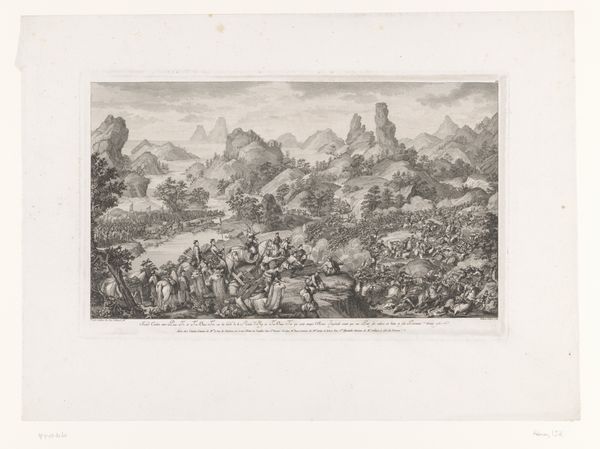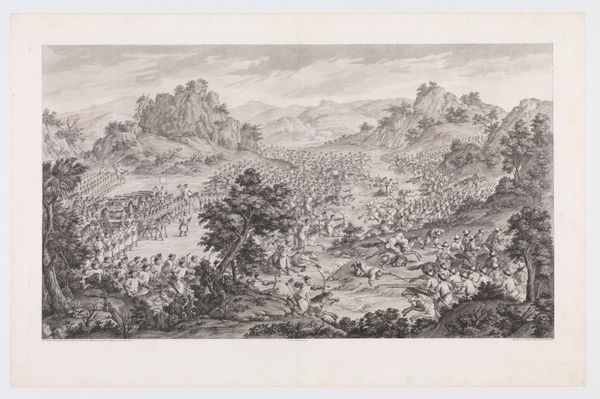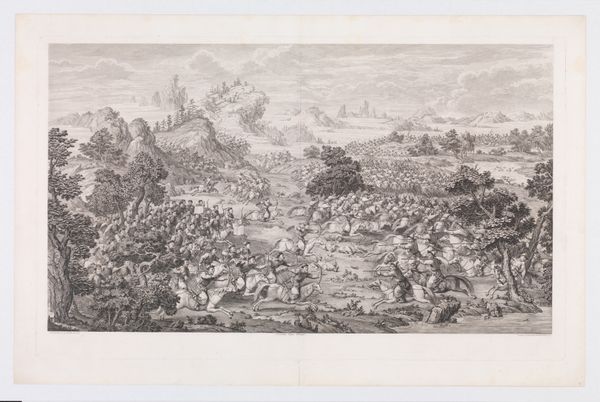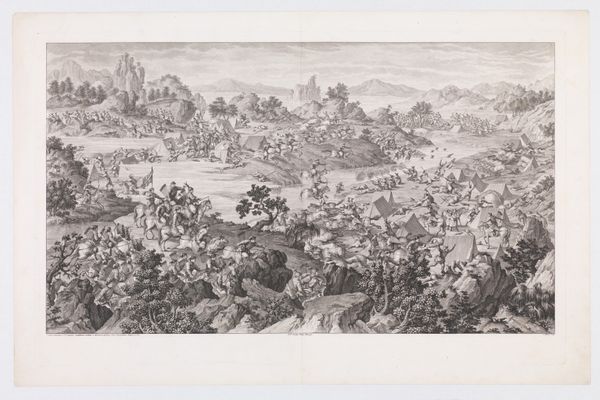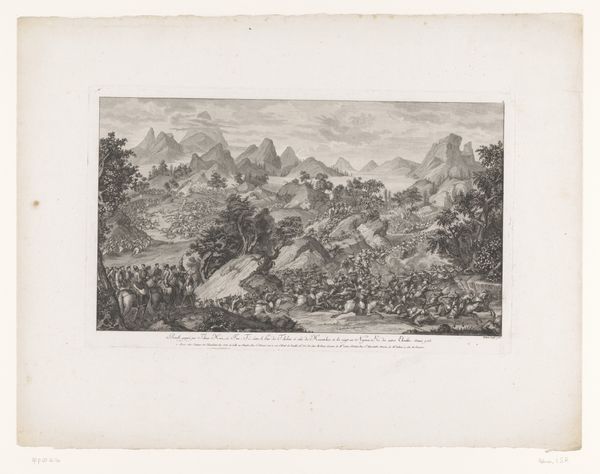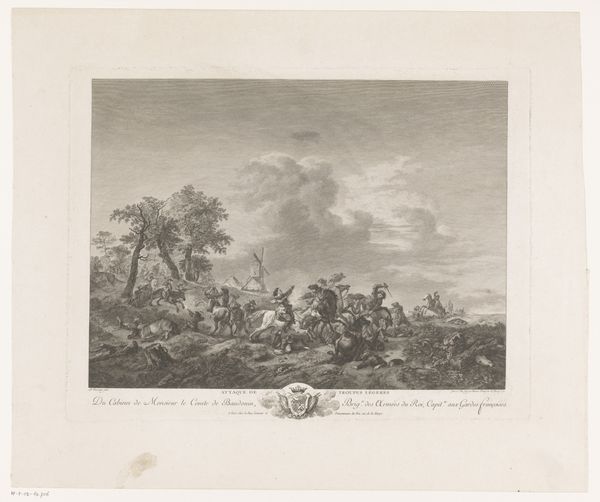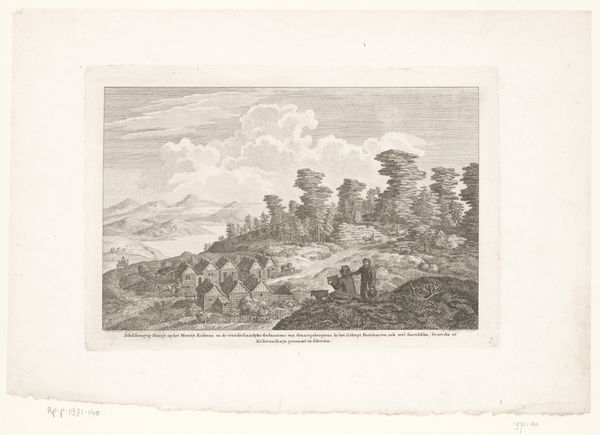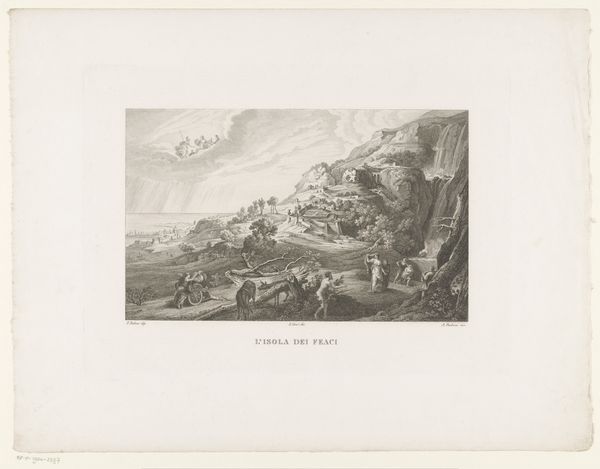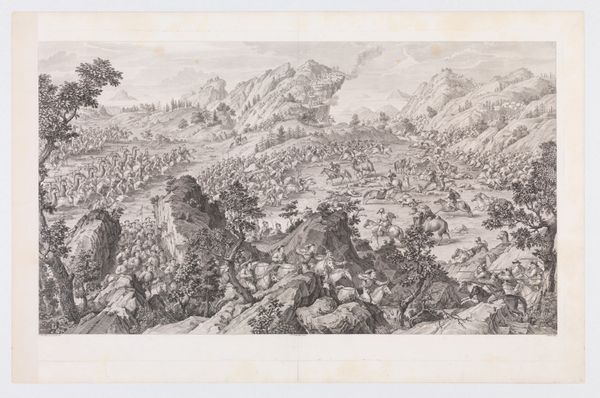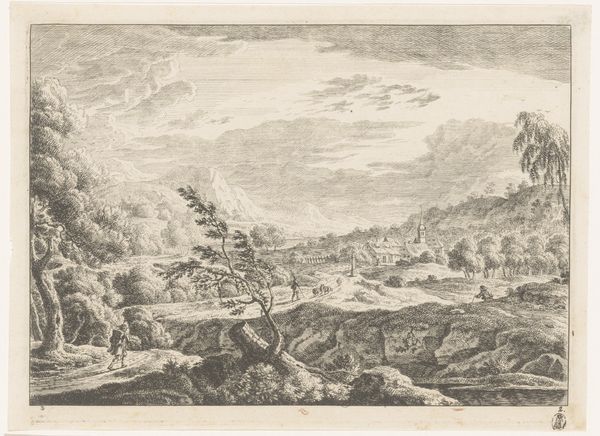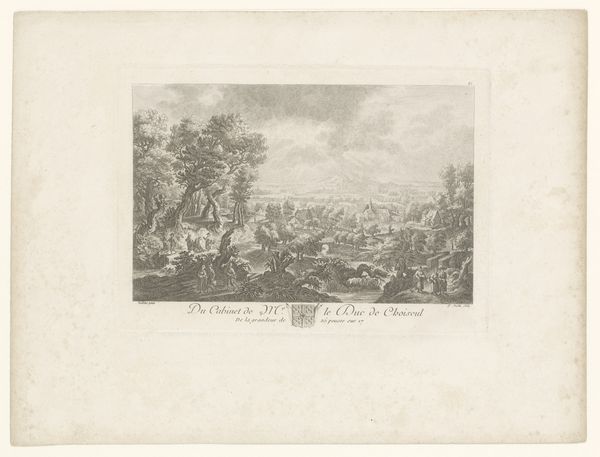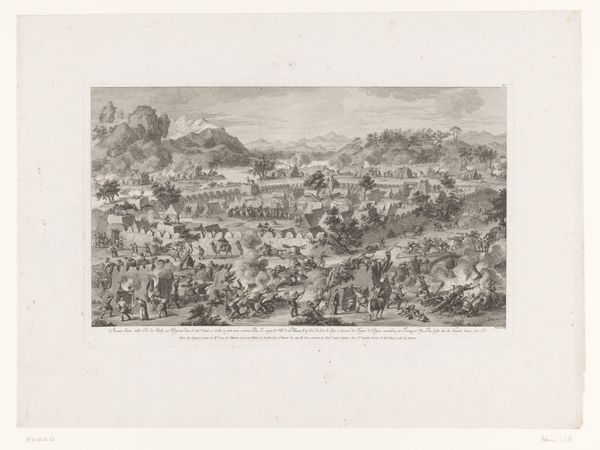
print, engraving
#
neoclassicism
# print
#
landscape
#
mountain
#
15_18th-century
#
history-painting
#
remaining negative space
#
engraving
Dimensions: height 270 mm, width 431 mm
Copyright: Rijks Museum: Open Domain
Curator: Welcome. Today, we are exploring "Slag van Arcul in de bergen van Pulok-koi," an engraving made around 1785 by Isidore-Stanislas Helman. It's currently housed here at the Rijksmuseum. Editor: Whoa, dense! My first impression is just how incredibly detailed it is. All those tiny figures in a sprawling, almost theatrical landscape...it feels both epic and claustrophobic at the same time, somehow. Curator: Indeed. The sheer scale and intricacy speak to the neoclassical fascination with grand historical narratives, yet the setting offers an interesting commentary. It represents the Battle of Arcul, a pivotal moment within broader power struggles of the time. Understanding it requires we ask whose history is being privileged here and to what end? Editor: Makes you wonder about the human cost, doesn't it? I mean, look at that smoke billowing from the mountains – that's somebody's home. I get this underlying sense of the personal being overwhelmed by the political... Like tiny ants scurrying about during an earthquake. Curator: Precisely. Note how Helman utilizes engraving to capture light and shadow. This allows him to convey the chaos and drama of battle within the landscape, suggesting humanity's limited agency against historical and even natural forces. Editor: Yeah, that chiaroscuro gives it a real punch. Makes everything seem much more dramatic, almost biblical. The tiny humans give way to mountains and cliffs, its quite a take! Makes you ponder conflict at an interpersonal scale. Curator: From a critical perspective, we can see the representation of war in the landscape. It's necessary to challenge such portrayals and explore who benefits and who is made invisible. How does this engraving endorse or critique ideas of nationhood and cultural or political identity? Editor: It feels like a landscape painted with violence, it's almost seductive in its grandeur and devastation. The meticulous artistry gives it a kind of hypnotic quality... until you really stop to consider what you’re looking at and understand its sociopolitical implications. Curator: This is the crux of neoclassical historical art: the blending of technical skill with ideology. This is how narratives of power and resistance become visually entrenched. Editor: You know, seeing something like this reminds me art's ability to be a double-edged sword. Something beautiful, yes, but also... loaded. Thanks for untangling some of those complexities. Curator: And thank you. The complexities, I suspect, are never fully resolved, just deepened and enriched through ongoing conversations like this.
Comments
No comments
Be the first to comment and join the conversation on the ultimate creative platform.
